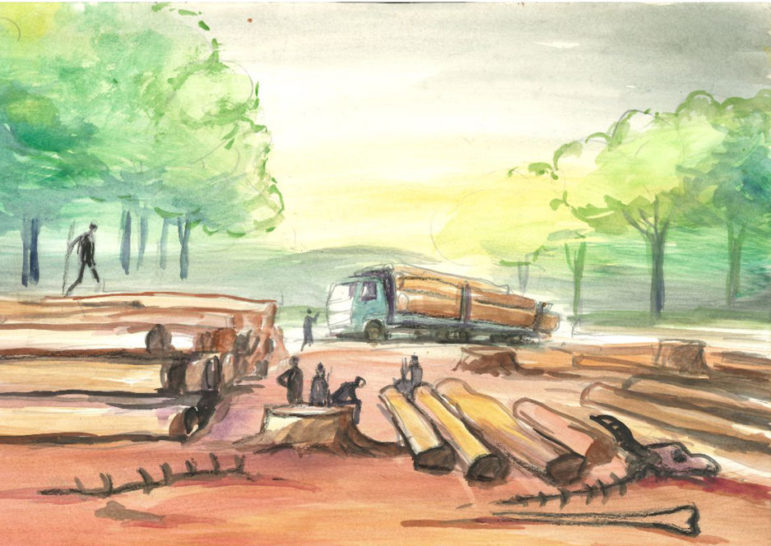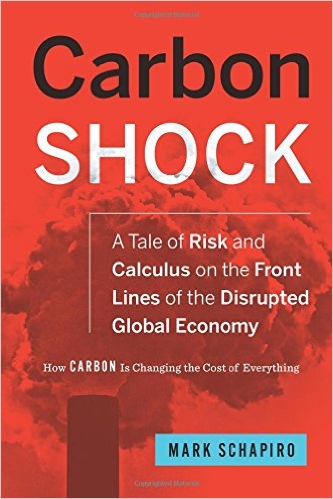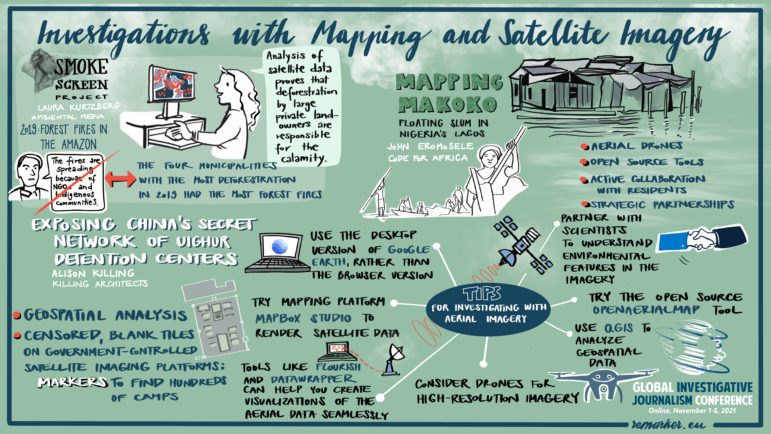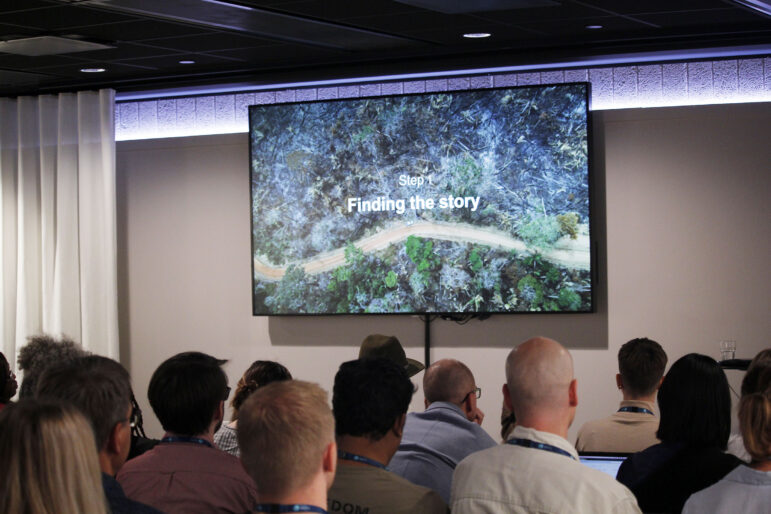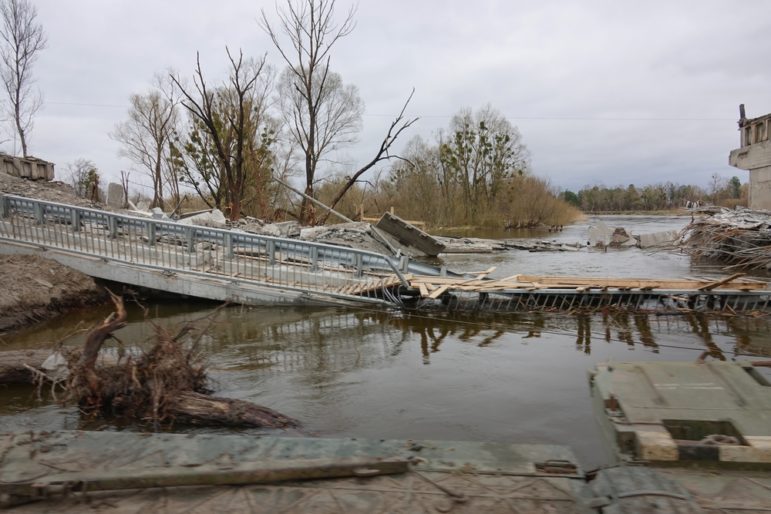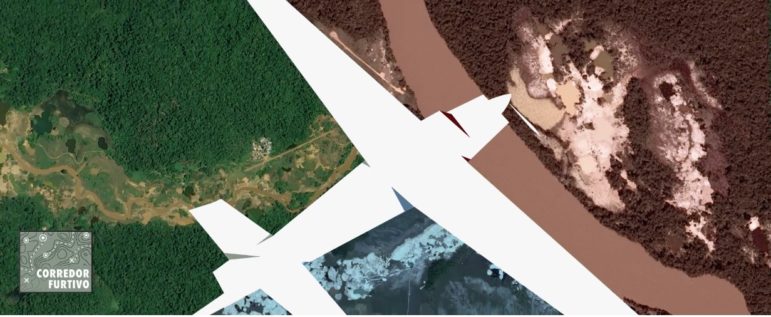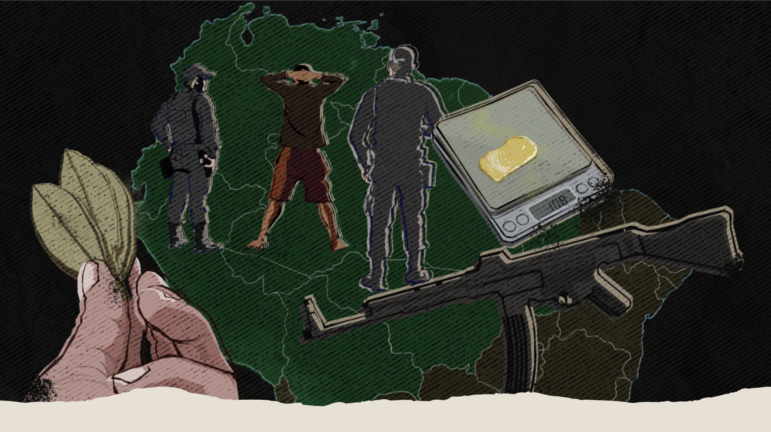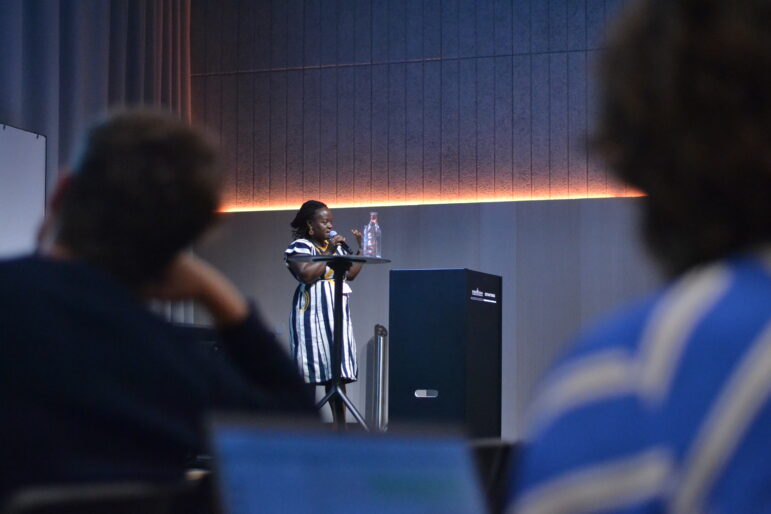

Madeleine Ngeunga, the Pulitzer Center's Africa editor, discusses covering environmental crimes during a panel at GIJC23. Image: Ellen Lindqvist Karsberg for GIJN
Waste, Fraud, Abuse: Covering the Environmental Crime Beat
Environmental crime generates billions of dollars annually for criminals, while harming communities and ecosystems, sometimes in irreversible ways. Environmental abuses also make up the world’s fourth-most lucrative form of organized crime, according to the United Nations Environment Programme (UNEP).
During a session at the at the 13th Global Investigative Journalism Conference (#GIJC23) in Gothenburg, Sweden, InfoCongo editor and Pulitzer Center Africa editor Madeleine Ngeunga, The Public Source founding editor Lara Bitar, and Organized Crime and Corruption Reporting Project (OCCRP) environment editor Caroline Henshaw shared stories and advice from their experiences covering environmental crimes. Khadija Sharife, OCCRP senior investigator, moderated the panel.
In her opening remarks, Sharife addressed the importance of the environmental beat: “Journalists who cover the ecology are not just speaking to the here and now issue of corruption that’s happening in one country,” said Sharife. “They’re speaking to life itself.”
Cautionary Tale in Lebanon
Bitar described to attendees how The Public Source, a GIJN member, has tackled environmental crime investigations in Lebanon, including a deep look into landfills during the country’s public trash crisis. Taking advantage of Lebanon’s recently passed access to information law, The Public Source reporters began requesting and obtaining government documents and found that, in violation of the law, contractors had started work on landfills before completing environmental impact assessments.
The Public Source also unraveled how 2,400 tons of industrial toxic waste barrels from Italy ended up in Beirut’s port during the Lebanese Civil War. The story of the toxic barrels foreshadowed what was to come at the port of Beirut in August 2020, Bitar said, when an explosion caused widespread damage across the city, and killed over 200 people and injured thousands more.
There are some parallels between the port blast and the case of the toxic waste barrels from Italy: dangerous cargo left abandoned that created ecological time bombs. Both were environmental tragedies where accountability issues loomed large.
Bulgaria and the Carbon Market
In the rush to combat climate change, there are many opportunities for fraud to flourish. Caroline Henshaw’s OCCRP team investigated two power stations in Bulgaria associated with a secretive tycoon that may have under-declared carbon dioxide emissions to the European Emissions Trading System, the world’s first and largest carbon market.
“Understanding how it works and understanding how easily it can be defrauded is really, really important,” said Henshaw, who discussed some of the highlights of the investigation into the carbon market. They discovered that two power plants had, instead of employing a well-established emissions verifier, hired a startup run by a 27-year-old with no industry experience — and may have avoided paying taxes on roughly €30 million euros (US$31.5 million) by underreporting their emissions.
“Officials were also saying this is clearly a fraud — and yet, it had been going on for years and years,” Henshaw explained. After the investigation was published, European Union prosecutors launched a probe to look into the alleged fraud, with more than 150 police officers conducting 40 searches in nearly a dozen cities across the country, OCCRP reported.
But for many other types of environmental damage, causing widespread harm often involves no legal repercussions whatsoever. “The people who write the rules… have made sure that if anything happens, the most that could ever happen is a fine,” said Sharife. “Ecocide is just a cost of business.”

Caroline Henshaw (right) from OCCRP speaks at the session on the environment crime beat at GIJC23. Image: Ellen Lindqvist Karsberg for GIJN
Staying Safe
Panelists agreed that the environmental crime beat can be a perilous one, and that security should always be top of mind. “The most dangerous point is where you have powerful political actors intersecting with organized crime,” said Henshaw. “You see that a lot in environmental issues where you have people with massive vested interests and a lot of power behind them.”
Madeleine Ngeunga, a data and investigative journalist from Cameroon, has worked on investigations on deforestation, illegal gold mining, and rosewood trafficking. Through her work for the Pulitzer Center, she supports investigative journalists in sub-Saharan Africa reporting on rainforest issues. She said security considerations have to be part of any reporting project plan. “We have this protocol of security that we try to put in place. We try to emphasize it before the beginning of one project,” she said.
In an interview after the panel, Ngeunga said there are simple steps journalists can take on any security-sensitive project, including communicating via encrypted channels such as Signal, and changing hotels every night while on reporting trips. (See also: Ngeunga’s chapter on covering environmental crime in GIJN’s Guide to Investigating Organized Crime in Africa .)
The panelists also presented advice and resources for investigating environmental crime and abuses.
Reporting Tips
- Consider whether public officials are somehow involved or complicit in environmental crimes.
- Ask the question: Who are the main enablers allowing this problem to persist? Then, report on the roots of the system.
- Elevate and include the voices of community members who are directly impacted by environmental crimes and ecocide. How do environmental crimes impact community well-being, security, social lives, and financial security?
- When possible, drones can be a powerful reporting tool.
Resources for Investigating Environmental Crime
- Open Timber Portal includes country-specific information about forest management and harvesting in Central Africa.
- Global Forest Watch enables users to visualize and analyze forest monitoring data from around the world. The platform also includes an open data portal with information about land use, forest change, conservation efforts, and more.
- Global Fishing Watch has a map and data tracking the movements of commercial fishing vessels.
- For reporters investigating illegal, unreported, and unregulated fishing, the IUU Fishing Index rates countries’ vulnerability, prevalence, and response to illicit fishing practices.
- EcoCrime Data allows users to view various environmental threats to the Amazon basin via multi-layered maps. It includes information about environmental defenders, cattle ranching, soy facilities, violent deaths, illegal mining, and more.

